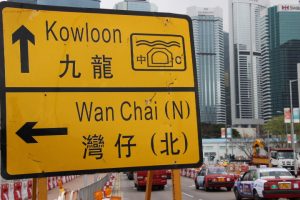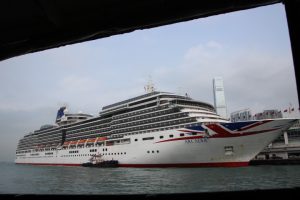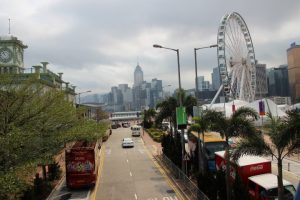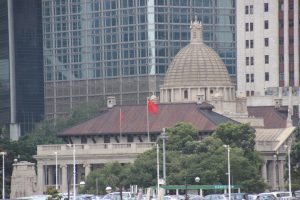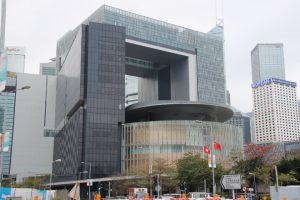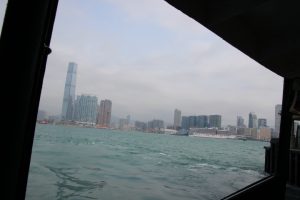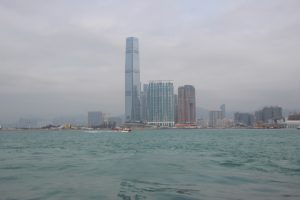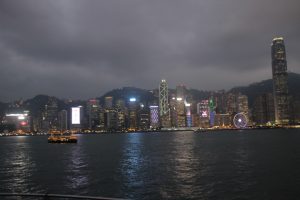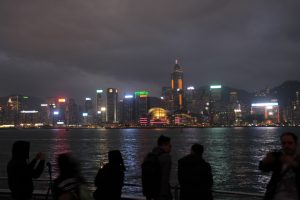Hong Kong today is a product of the British take over of Hong Kong Island in 1841 during the First Opium War between China and Britain. The 8000 or so local people seemed to work with the British but the two countries fought over the trading rights of other port cities such as Shanghai. The 1842 Treaty of Nanking ceded Hong Kong Island to the British. The population grew to about 86,000 and the British needed to expand their claim. Eventually the Kowloon Peninsula and Stone Cutter’s Island were given to Britain by the Convention of Beijing. During 1898 Britain turned Hong Kong into a fortress to protect the port and trade routes as well as local water supplies. On 1st July 1898 the 99 year lease of The New Territories was signed in Beijing. The Japanese occupied Hong Kong for 3 years from 1941 until recaptured by the British. Hong Kong as a manufacturing and trading centre really took off in the 1950s. The port became an entrepot port where large cargo ships imported and exported raw materials and finished goods which were distributed to and from smaller and relatively dear ports by smaller ships, including sailing ships called sampans. On our previous visits in the late 1990s the harbour was busy with big and small ships. Today we saw one. Have the Chinese moved sea trade to ports closer to their manufacturing areas? Hong Kong was not a port known for silk and spice route activity but southern Chinese ports such as Canton were hubs for traffic from India, Sri Lanka, Singapore and the islands of Southeast Asia. In a way the modern entrepot port continued this ancient way of trading.


We crossed the harbour to Hong Kong Island on one of The Star Ferries that have moved people across the harbour since 1888 and are still used by commuters despite rail and road tunnels beneath the harbour.
The ferry ride gives a good view of the mass of skyscrapers clinging to the shoreline as well as the rain forested hills in the centre of the island. There are 12 diesel powered ferries operating today with each one named after a particular star.
As one crosses to Central Plaza the view to the left is dominated by the Convention Centre built in time for the handover as well as the 373m high tower of Central Plaza.
Further to the right are the Bank of China and HSBC buildings but both of these are dominated by The Two IFC Tower which soars above Victoria Harbour at a height of 412m.
It was Hong Kong’s tallest building until 2010 when the International Commerce Centre at 484m in height opened in Kowloon. This houses the world’s highest hotel, The Ritz-Carlton.
The buildings may be of steel, glass and concrete but traditional bamboo scaffolding is still used to provide protection for pedestrians at ground level.
We caught the ferry back to Kowloon after a pleasant walk to Wan Chai and the Central Plaza and Convention Centre.
Adjacent to the Convention Centre is the Renaissance Harbour View Hotel which in 1996 provided us with a family room overlooking the harbour and the construction of the Convention Centre.
Just north of the Kowloon Terminal is Hong Kong’s cruise ship dock, today occupied by the Arcadia which had arrived here following a 21 day cruise from Australia.
At sunset we went walkabout again to see the lights of the buildings of Hong Kong Island and Kowloon. The first to display a changing face of lights and adverts is the International Commerce Centre in Kowloon. Turning around one can see the HSBC headquarters, which when opened in 1985 was the priciest building in the world as it apparently sits on the best possible feng shui.
Slightly to the left is the Central Plaza in Wan Chai which is the third tallest building in Hong Kong and changes colour every 15 minutes.
The Two International Finance Centre Tower rises to 412m above Victoria Harbour. The harbour was named after Queen Victoria but in Anglicised Chinese, Hong Kong means Fragrant Harbour.
The HK Convention and Exhibition Centre covers a large area of the shoreline and was designed to resemble a bird in flight.
The Cultural Centre next to the Kowloon-Canton railway clock tower, is the world’s first windowless building. Apparently the designers did not want what happens inside to be dominated by views of the outside world.
